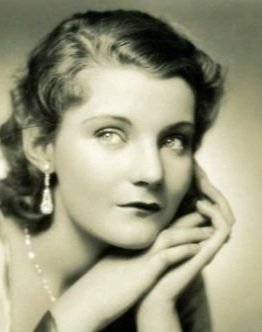
Helen Chandler: Picon Citron
In the original or at least the first American sound version of Dracula (1931), Bela Lugosi spends a sizable portion of the film after Helen Chandler’s blood, and his pursuit of her seems more than a little misguided. Was there ever a screen performer who looked as snow white as Chandler, as anemic, as small and bloodless? She was a petite blond, a wraith, and her blue eyes were almost white in their starkness, too, so that she always seemed to be looking inward instead of out, and those small inward eyes of hers could have an unnerving quality that suits the buggy but creaky horror of this Dracula. Chandler speaks in a strained, chirping voice, and she’s very intense. Who is she, and why does she stare like that?
She was born in South Carolina, and her Southern accent comes out sometimes on screen, especially in her last film, Mr. Boggs Steps Out (1938), where her distinctively belle-like volatility makes her seem kin to Miriam Hopkins. In the 1920s, Chandler built herself an impressive career on Broadway, playing with John Barrymore in Richard III, Lionel Barrymore in Macbeth, and then as Hedvig in Ibsen’s The Wild Duck and as Ophelia in a modern dress Hamlet. Hedvig goes blind and Ophelia goes mad, and both of these extremes must have suited Chandler’s birdlike imperturbability, her sense that she lived entirely in her own world. She was a leading lady for John Ford in Salute (1929), and then she made an impact as one of the lost people on board a floating ship of the dead in Outward Bound (1930), which looks as creaky today as Lugosi’s Dracula does.
The prime year for Chandler in films was 1931. After Dracula, she played opposite Ramon Novarro in Jacques Feyder’s Daybreak, a movie where she’s asked to do an extended drunk scene: “I want another one!” she cries, when it’s clear that she’s had more than enough booze, and then when Novarro obliges, Chandler insists on “a full one.” And so when Chandler played Nikki in her finest film, William Dieterle’s The Last Flight, she had some practice with drinking on screen for one of the all-time best boozing movies and one of the all-time best romantic group movies.

Three on a Match
The title and premise of Three on a Match suggest an ensemble film, but don’t be fooled. This is Ann Dvorak’s movie, and the finest showcase for her avid, feverish energy. She was twenty years old and blazing her way through her first year as a star, starting with her electrifying turn as Tony Camonte’s insatiable sister in Scarface. Slender and elegant, with a refined beauty, Dvorak always seemed to be looking for trouble. “Somehow the things that make other women happy leave me cold,” she says in Three on a Match, explaining the gnawing dissatisfaction that a devoted husband, a cherubic son and a life of luxury can’t assuage.
The other two on the match are Joan Blondell and Bette Davis, but they are stuck with tepid roles, and even Warren William (as Dvorak’s husband) is uncharacteristically virtuous and bland. All raw nerves and dangerous luster, Dvorak makes her haughty, self-immolating character not only more interesting but more sympathetic than the nice women who profit from her fall.
Seduced by a penniless playboy (Lyle Talbot, leaving his usual trail of slime) she shacks up with him in a hotel suite, neglecting her child, and slides rapidly from champagne parties to drug-addicted poverty. The movie really starts to get good when the debt-ridden Talbot kidnaps Dvorak’s son. In a noirish sequence, they all hole up in a squalid apartment, guarded by a trio of goons led by Humphrey Bogart, who nastily mocks Dvorak’s cocaine withdrawal. Three on a Match crystallizes her daredevil glamour, while also offering a brisk, punchy warning about what happens to girls who play with matches.
by Imogen Sara Smith

